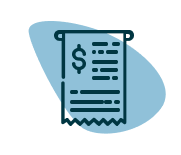Lines of credit are similar to a credit card: A bank or lender approves you for a set amount of financing (similar to a credit limit) which you can draw from at your discretion.
Once you repay what you’ve spent, you can continue to draw capital from your line of credit. This sort of financing is often referred to as revolving credit because you can tap into it again and again.
Here’s an example: Say you’re approved for a small business line of credit of $60,000. You decide to take out $40,000, keeping the other $20,000 in the pool of available funds.
Once you pay that $40,000 back, plus interest, you’ll have the full $60,000 at your fingertips again—without having to apply for another loan.
Revolving small business lines of credit typically don’t have term lengths—you can withdraw and pay back those funds indefinitely, as long as your lender believes that you’re a responsible borrower. The time and energy you save is one of the biggest benefits to a business line of credit.
Although most business lines of credit are traditional revolving credit products, some will not automatically renew after you’ve fully repaid what you owe. Some non-revolving lenders will have you reapply to renew your line of credit. Assuming you’ve remained in good graces with your lender, reapplying should be an easy process.
Business lines of credit are sometimes differentiated as short-term lines of credit and medium-term lines of credit. The differences are mostly in their minimum qualifications, maximum fund amounts, and interest rates.
The longest-term lines of credit typically come from a traditional bank. Medium-term lines of credit and short-term lines of credit are typically found with online lenders.
Business lines of credit can come secured—backed by collateral like inventory or accounts receivable—or unsecured, backed only by your personal guarantee.




